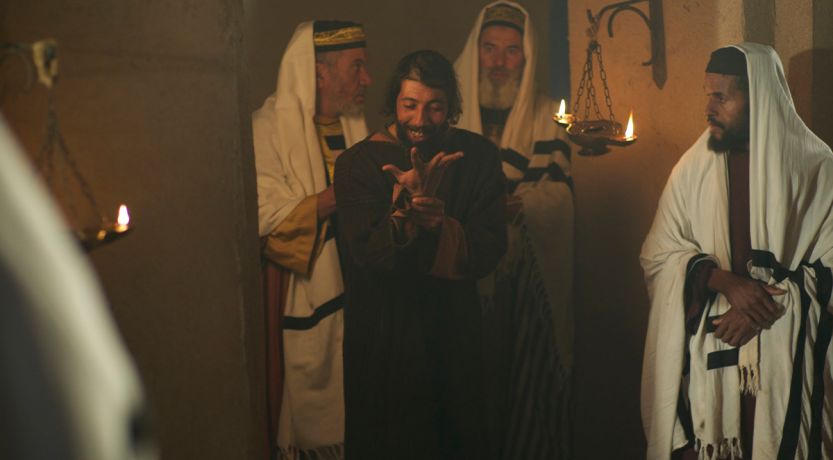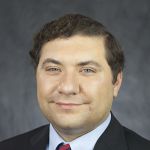Jesus was accused of Sabbath-breaking because He healed people on the Sabbath. Was this breaking the Sabbath? What can we learn from Jesus’ Sabbath healings?
In our last article in the “Walk as He Walked” series, we asked, Did Jesus keep the Sabbath? We showed that He certainly did and also declared Himself “Lord of the Sabbath” (Mark 2:28).
Despite this, His enemies still accused Him of Sabbath-breaking on multiple occasions. Many of these accusations centered around His healing people on the Sabbath.
The Gospels record Jesus performing seven healings on the Sabbath day. His critics argued that healing people’s ailments constituted work. According to them, this made Jesus a Sabbath-breaker and a sinner.
Were they correct? Did Jesus’ healings break the Sabbath?
Since the Bible unequivocally teaches that Jesus was sinless (Hebrews 4:15), we know those accusations were totally false.
So how should we understand Jesus’ Sabbath healings? If He wasn’t a Sabbath-breaker, what do they teach us?
The motive and implications of the accusations
Before examining Jesus’ Sabbath healings, let’s consider the motive behind the accusations.
Luke writes, “The scribes and Pharisees watched Him closely, whether He would heal on the Sabbath, that they might find an accusation against Him” (Luke 6:7, emphasis added throughout; see also Mark 3:2).
They couldn’t catch Him breaking any scriptural instructions for observing the Sabbath, so they built their accusations around their oral traditions and interpretations.
Their concern wasn’t about upholding the sanctity of the Sabbath. Instead, they were seeking to undermine Jesus’ credibility.
Yet, a closer look at these accusations reveals more about Jesus’ Sabbath-keeping than we may have thought.
Consider that healing and the disciples’ snacking on grain were the only Sabbath-related accusations Jesus’ enemies leveled against Him.
They didn’t accuse Him of doing carpentry work on the Sabbath. They didn’t accuse Him of fishing on the Sabbath. They didn’t accuse Him of neglecting to assemble on the Sabbath. They didn’t accuse Him of employing servants on the Sabbath. We could go on and on about accusations they did not make.
Here’s the point: They didn’t try to accuse Him of blatant and undeniable Sabbath-breaking activities because He never did any of those things. As corrupt as they were, the Pharisees weren’t foolish enough to invent accusations that could be easily disproven.
They couldn’t catch Him breaking any scriptural instructions for observing the Sabbath, so they built their accusations around their oral traditions and interpretations.
The Jews had developed oral traditions about providing medical care on the Sabbath. The Pharisees sought to use these extrabiblical laws against Jesus because He healed on the Sabbath. While common sense should recognize that miraculous healing isn’t performing a medical procedure, it was His only Sabbath activity they could try to construe as sinful.
So let’s examine three instances where they accused Him of breaking the Sabbath by healing people.
Jesus heals a man with a withered hand on the Sabbath (Matthew 12, Mark 3 and Luke 6)
In this instance, Jesus entered a synagogue and found a man with a hand deformity.
Jesus, the center of attention in the room, asked the man to stand before Him, putting his disability in full view of everyone. He then asked, “Is it lawful on the Sabbath to do good or to do evil, to save life or to destroy?” (Luke 6:9).
The real issue was whether God considered it a sin to do this type of good for someone on the Sabbath. There was no physical work involved. Jesus healed simply by speaking words or touching someone.
Jesus was also exposing the glaring hypocrisy of those who opposed Him. Weeks before, a group had tried to kill Jesus by throwing Him off a cliff—on the Sabbath (Luke 4:16, 28-29). His enemies were eager to condemn Him for healing but had no qualms about mob murder on the Sabbath.
No one answered, so Jesus answered His own question through action: “And when He had looked around at them all, He said to the man, ‘Stretch out your hand.’ And he did so, and his hand was restored as whole as the other” (Luke 6:10).
Instead of rejoicing that a man was now free from a life-altering disability, His accusers were “filled with rage” (verse 11).
By answering the question, Jesus demonstrated that as “Lord of the Sabbath,” He held the ultimate authority to define proper Sabbath observance.
Jesus heals a disabled woman on the Sabbath (Luke 13)
While teaching in the synagogue on another Sabbath, Jesus encountered a woman bent over with a severe spine condition. He called her to Him, laid hands on her and healed her spine—allowing her to stand straight and walk normally.
Upon seeing this, the synagogue leader indignantly exclaimed that healing should be done only on the six working days of the week.
Jesus answered, “Hypocrite! Does not each one of you on the Sabbath loose his ox or donkey from the stall, and lead it away to water it?” (verse 15).
Jesus then pointed out that healing on the Sabbath did not break the Sabbath, but instead, actually magnified its meaning. “Ought not this woman, being a daughter of Abraham, whom Satan has bound—think of it—for eighteen years, be loosed from this bond on the Sabbath?” (verse 16).
In other words, this was an issue of freedom and rest—not work. She was bound by this disability for 18 years. It was a burden that made her life extremely difficult and uncomfortable. Now, she was freed from this affliction and given rest from its discomfort. This underscored the spiritual rest the Sabbath provides.
Jesus’ Sabbath healings vividly illustrate that the Sabbath is a day of freedom and rest from physical burdens, foreshadowing the promised future rest of the Kingdom of God.
Jesus heals a man with dropsy (Luke 14)
On another Sabbath, Jesus was attending a meal at the home of a prominent Pharisee. At this gathering, the Pharisees again “watched Him closely” (verse 1) in order to catch Him doing anything they could use against Him.
Also at this meal was a man with dropsy, or edema. This is an ailment in which fluid builds up in the tissue and causes extreme swelling in different parts of the body, making movement painful and difficult.
Upon seeing the afflicted man, Jesus perceived what they were trying to do and directly asked, “Is it lawful to heal on the Sabbath?” (verse 3).
This was brilliant because they were working from the premise that healing on the Sabbath is a sin, so He challenged them to defend it. They would need to either attempt a complex and convoluted explanation of their oral traditions or simply not answer. They chose the latter.
Jesus, once again, answered the question through action. Luke writes, “And He took him and healed him” (verse 4).
Jesus then shared a relatable scenario to demonstrate why this wasn’t a sin. “Which of you, having a donkey or an ox that has fallen into a pit, will not immediately pull him out on the Sabbath day?” (verse 5).
His point was simple: If you will put forth the effort to relieve the suffering of an animal on the Sabbath when it’s in your power to do so, how is it a sin for the Son of God to relieve human suffering when it’s in His power to do so?
After all, it took substantially more work for men to hoist a heavy and possibly injured ox out of a ditch than it did for Jesus to simply speak words.
The lessons of Jesus’ Sabbath healings
If you want to read through the Sabbath healings we didn’t cover in this article, you can find them in Mark 1:21-28 (a demon-possessed man), Mark 1:29-31 (Peter’s mother-in-law), John 5:1-18 (a lame man) and John 9:1-41 (a man blind from birth).
So, what should we learn from the Sabbath healings?
First, the accusations were always based on the Pharisees’ oral traditions and interpretations, not the Hebrew Scriptures. It’s always dangerous to elevate human tradition to the level of Scripture.
Second, the accusations were driven by the dark motive to condemn, not a desire to uphold the Sabbath’s holiness. By using the Sabbath as a mere tool to attack, they were actually abusing it themselves.
Third, the fact that it was an ongoing issue proves Jesus upheld the sanctity of the Sabbath. If Jesus had come to abolish the Sabbath, the whole issue would have been moot. The first time the accusation was made, He could have said it didn’t matter what He did on the Sabbath because He was abolishing it. But Jesus never said that.
Fourth, divine healing is possible only through God. Healing was a miracle provided through God’s power. Just as God listens to prayers offered to Him at any time, including the Sabbath, so God provides healing and blessings to His people, even on the Sabbath.
Fifth, Jesus’ Sabbath healings actually deepen our understanding of the significance and meaning of the Sabbath. The miracles provided physical rest from suffering on the day of rest, highlighting the Sabbath’s spiritual meaning and pointing our attention to the future time of global rest in the Kingdom of God.
Jesus’ Sabbath healings demonstrate His deep love for human beings and the Sabbath day. We must develop that same love for people and God’s Sabbath as we continue to . . .
Walk as He walked.






